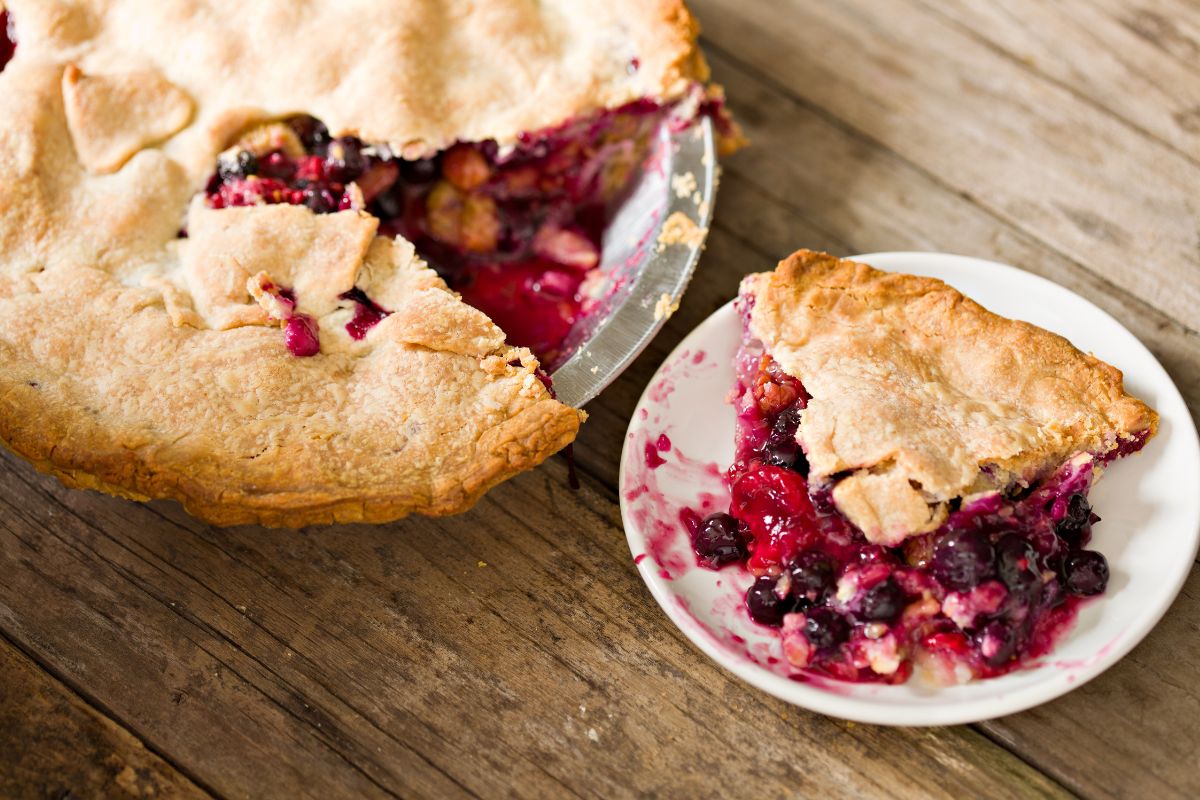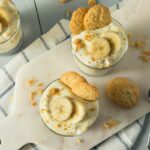We bet you’ve heard the whole, bananas are berries because they’ve got seeds spiel a million times before, normally from someone looking very smug about their deep-cut nana-knowledge.
Well, next time you hear this, you can lay the smackdown on them with the details we’re about to discuss.
![Do Bananas Have Seeds? [A Comprehensive Explanation]](https://eatkanga.com/wp-content/uploads/2023/04/Do-Bananas-Have-Seeds-A-Comprehensive-Explanation.jpg)
First of all, the presence of seeds alone does not a berry make (more on that a bit later), and secondly, bananas don’t always have seeds! We know, right?… Mind blown.
Why Don’t All Bananas Have Seeds?
Naturally speaking, yes, bananas are supposed to contain seeds, albeit not the same kind of seeds you’ll find in apples, peaches, plums, etc.
However, through centuries of selective breeding by humans, the bananas in our fruit bowls have been modified to the point of gaining a third set of genes, when traditionally, they only had two.
The result of our playing banana god (Did you know you can make banana dog treats? Read more here)? Something called a triploid, which is a reproductive modification, or perhaps impediment is a more fitting descriptor.
Triploids are essentially immature seeds, meaning they never reached full seed-dom and never will.
This means that, technically speaking, those little black dots you see when you bite into or slice a banana aren’t seeds, as they’re incapable of performing the duties of seeds.
So, to summarize our first point, bananas picked in the wild will indeed contain seeds, while the bananas we pick up from the grocery store will be completely seedless.
Busting The Seeds = Berry Myth
Most fruits contain seeds and they aren’t all berries, so when someone mentions the whole bananas have seeds thing, it’s neither here nor there.
What’s more, it’s important to bear in mind that if something is a berry, it’s not not a fruit, as berries are just simple subcategories of fruit.
And with that out of the way, let’s continue our investigation of everyone’s favorite long yellow fruit.
Herbs Enter The Debate
Like many fruits, bananas grow on trees, banana trees to be exact (obviously), but get this… the banana tree isn’t actually a tree.
As it has a very moist, succulent trunk rather than a typical barky, wooden one, technically it cannot be classed as a tree.
It’s actually a very distant relative of the ginger plant, which we all know is a herb. So, the question then becomes, is the banana a herb, or maybe even a spice?
Nope, whether the banana is wild-grown and has seeds or is commercially grown and does not have seeds, it’s always a fruit.
The Growing Of Bananas
While banana trees are grown from the seeds in the wild banana, bananas themselves do not come from seeds.
They actually develop on a bulb-shaped rhizome, specialized stems that start life under the earth and eventually breach the surface, allowing the banana to gradually grow over a period of between 9 and 12 months.
Yep, you read that correctly… 9 to 12 months! A single banana is a work of great labor — Kind of makes you appreciate them more, huh?
However, before you start paying your respects to the bananas in your fruit bowl, you should know that they’re probably not as old as you think.
![Do Bananas Have Seeds? [A Comprehensive Explanation]](https://eatkanga.com/wp-content/uploads/2023/04/Do-Bananas-Have-Seeds-A-Comprehensive-Explanation-1.jpg)
Why Don’t Commercially Grown Bananas Have Seeds?
Surprise, surprise, we humans aren’t willing to wait the full 9 to 12 months to get our fix of bananas.
Commercial operations tend to harvest bananas long before they reach full maturity, but it’s not just a desire to put some fruit on the shelves of our grocery stores that sparks this rampant impatience.
By harvesting bananas early, we can also speed up the cultivation of banana trees significantly. How?
Well, once the rhizomes are established beneath the earth, it’s actually banana “pups” that breach the surface, from which the banana fruit starts to grow.
On banana plantations, the pups are allowed to grow to between 3 and 4 feet before they’re removed from the mother plant at the root connection, then re-planted separately, thus forcing the pup to grow into a mother plant itself.
Do these a few times, and before you know it, you’ve got banana trees and bananas coming out the wazoo, and it only took that single seed used to grow the very first tree on the plantation.
After that, the pup-to-mother tree transition handles proliferation, and as the purpose of seeds is then redundant, over time, the actual genetic mechanisms cease to function.
Generally speaking, commercial bananas are all the Cavendish variety, named for William Cavendish who developed the triploid process by crossbreeding a number of different wild bananas.
How Do Wild Bananas Differ From Commercial Bananas?
As previously mentioned, wild bananas have fully mature seeds, but that creates more of a difference than you might imagine.
For instance, the seeds in wild bananas are absolutely enormous compared to the little black flecks in commercial bananas.
This means there’s really not all that much room for the fleshy, fruity bit of banana that we eat, especially seeing as they’re so much smaller than their commercial counterparts.
What’s more, as they’re fully equipped with large mature seeds, banana trees in the wild reproduce via natural sexual reproduction.
Wild bananas are still safe for human consumption, and in fact, have a much more potent flavor, albeit not quite as sweet.
How To Grow A Banana Tree
If you get your hands on a wild banana, you can use it to grow your own banana tree:
- Soak the seeds in a bowl of warm water to soften them. This takes roughly 48 hours, and you’ll need to replace the water each time it cools.
- Set up a seed tray with rich potting soil containing lots of organic compost and is at least half made up of airy or sandy loam.
- Unless you live in a hot climate, sew the seeds indoors about ¼” into the soil.
- Use a heat mat to provide 5 hours of warmth between 19-hour cool stints.
- Keep the soil moist but not saturated. Depending on the variety, you might start seeing some germination between a few weeks and a couple of months.
Final Thoughts
In summary, bananas that grow in the wild do indeed contain seeds, but the dessert bananas we pick up from the grocery store don’t have fully mature seeds.
Years of human intervention have altered the genetics of the commercial banana tree, and they no longer produce the apparatus that permits natural sexual reproduction.
- How To Reheat A Cheesesteak - November 5, 2023
- What Are Three Must Have Kitchen Knives? - September 22, 2023
- How To Protect Edges Of Pie Crust - June 15, 2023








